Astronomy and infrared go hand in hand. I am an astrophysicist who is working at the Wendelstein observatory in the Bavarian alps, where I am in charge of our multi-band camera 3KK which can see simultaneously in the optical and infrared. This, of course, inspires my photography and vice versa. Being an observer throughout the year is challenging. While summer nights are short and pleasant, although sometimes exciting (in a bad way) when one is right inside a thunderstorm, winter nights can be tough. Working schedules of 16 hours, instrument malfunctions in the cold or having to physically dig through the snow are just a few examples. However, one can never stay mad at Mt. Wendelstein for every time there are different facets of beauty: spectacular sunsets, cloud inversions and special occurrences like lunar eclipses make everything worthwhile. In this essay, I tried to document my impressions throughout the year in different parts of the spectrum.
Hiking up to Mt. Wendelstein at an altitude of 1842m is not easy but quite enjoyable. In spring, summer and autumn I often walk if I don’t have to take too much gear with me. This photo shows the location where you can see the mountaintop and our observatory clearly for the first time. It’s always my favourite moment when taking friends up with me to see their reactions.
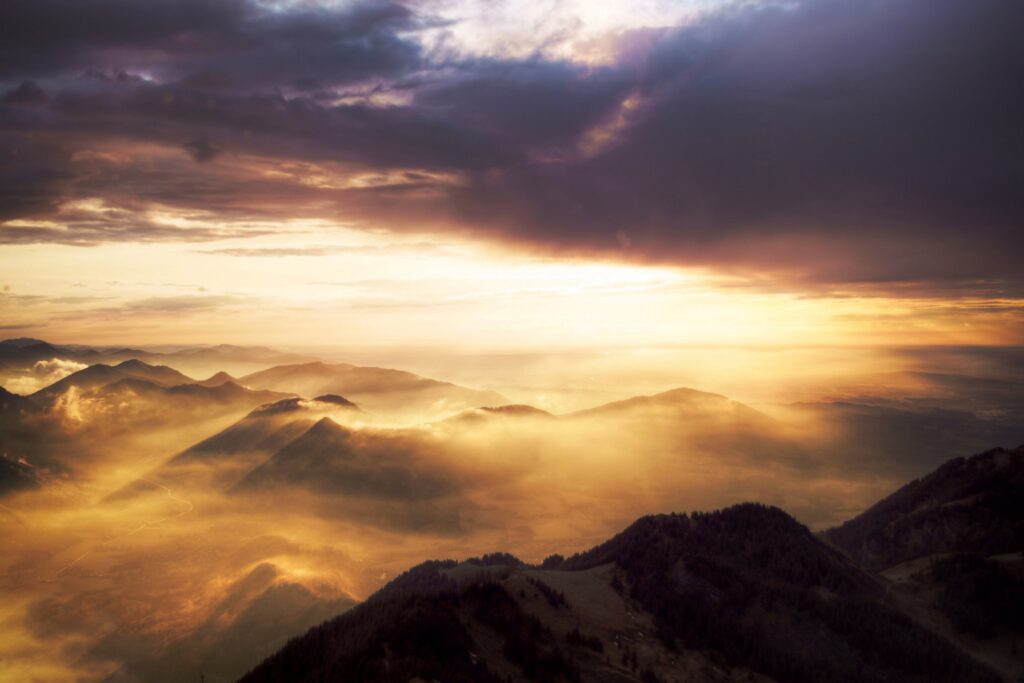
The alps are famous for their beautiful scenery, particularly during sunset, even lending their name to the term alpenglow. Here, full spectrum enhances the light that is filling the valleys during one of the most dramatic sunsets I’ve ever seen.
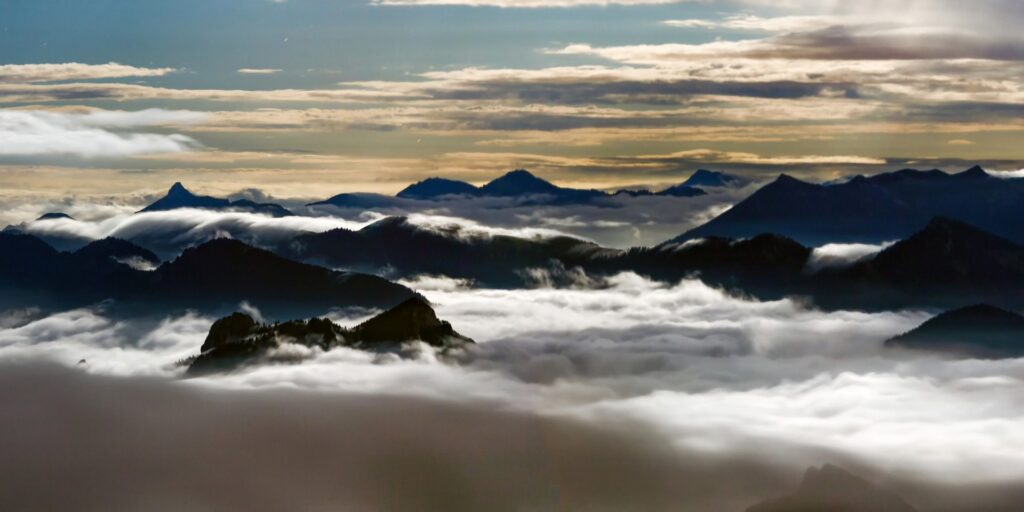
If the weather conditions are just right, inversion can occur. This means that the mountain pierces the cloud layer, leading to amazing observing conditions for astronomy. More important to this essay, however, is that it gives photos a surreal touch as everything seems to be swimming in a sea of white. This photo, taken with a long focal length in full spectrum, makes it very hard to judge the time it was recorded. It was actually during a full-moon night!
Metereological inversion during the day can look amazing. One of my favourite parts on Mt. Wendelstein is getting up after a long night of observations and taking a first look outside the windows. This was one of those moments. I immediately decided to get dressed and take a short walk outside.
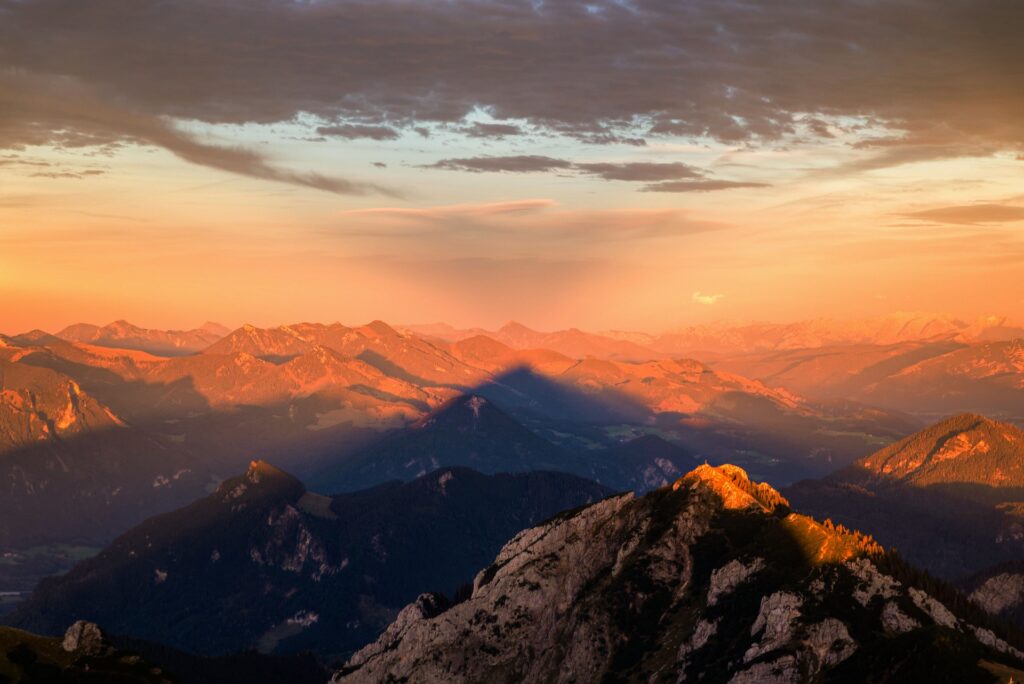
Sometimes, things can happen that are hard to explain for a moment. Here, not only did I see a mountain shadow, there appeared to be an inverted shadow above it, forming an hourglass-like structure. One can even see a small color change between the upper shadow and its surrounding area. What happened was that there was metereological inversion behind me and light reflected away from the clouds, slightly changing their infrared color as seen here and creating this inverted second shadow.
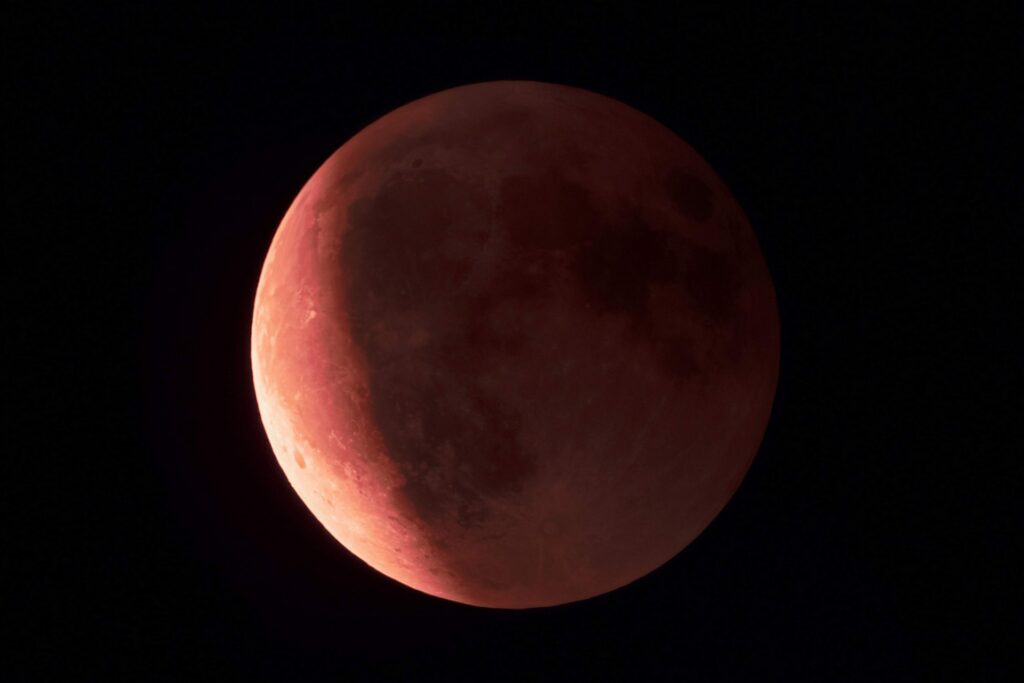
While solar eclipses are a class of their own, lunar eclipses are exciting events as well. During last summer, Europe witnessed the longest lunar eclipse of the century and naturally we had to observe it. Right after the main event ended, I used infrared to decrease the contrast between the bright and dark regions and furthermore increase the sharpness of the photo, since atmospheric distortions are less pronounced with longer wavelengths.
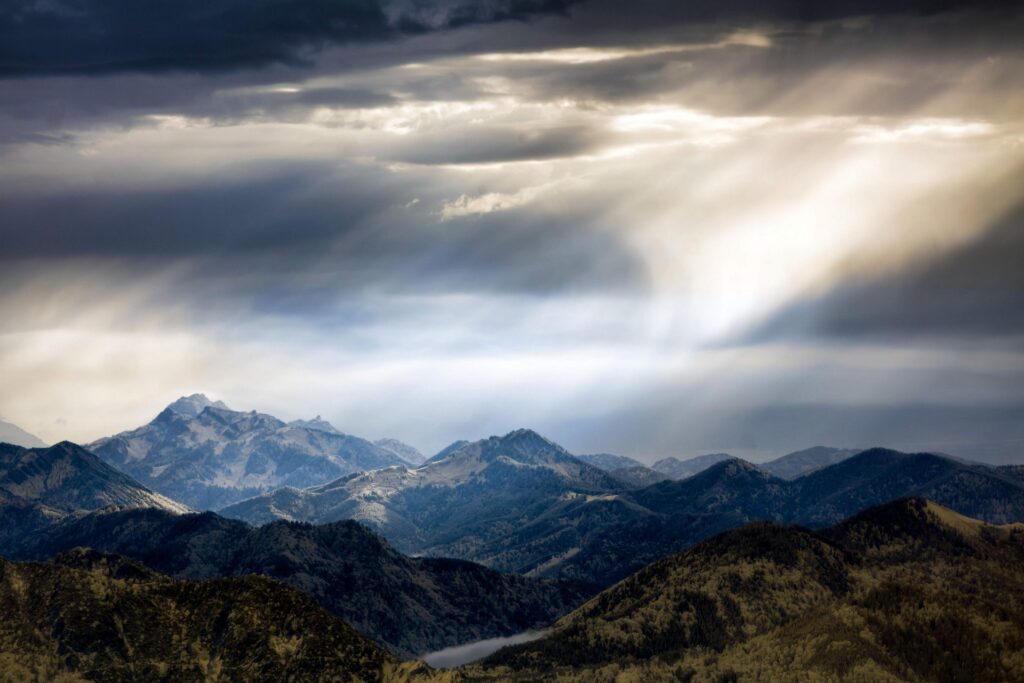
Summer was over and autumn was closing in. This usually shows the most scenic sunsets and golden hours and this here was no exception. Again, infrared provides better clarity.
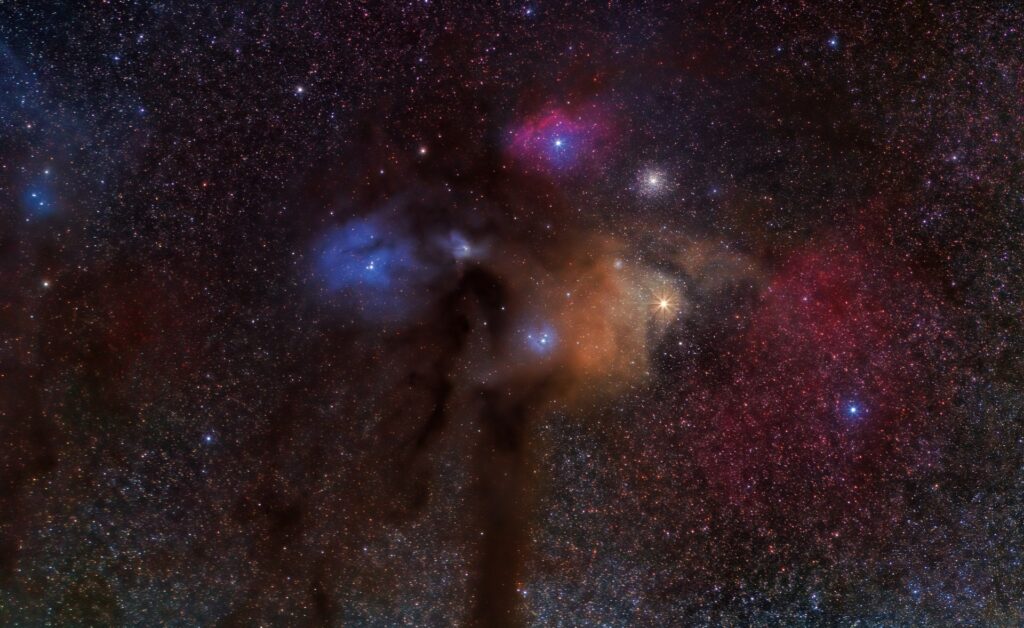
Of course, when you are an astronomer, you should do astrophotography from time to time. Armed with a small tracker, I photographed a part of Scorpius with Antares, its central red bright star. Thanks to full spectrum, I could increase the amount of light for the red hydrogen region, called H-alpha, which is unfortunately quite diminished with unmodified cameras. The farther infrared parts were cut to retain this visible-light look.
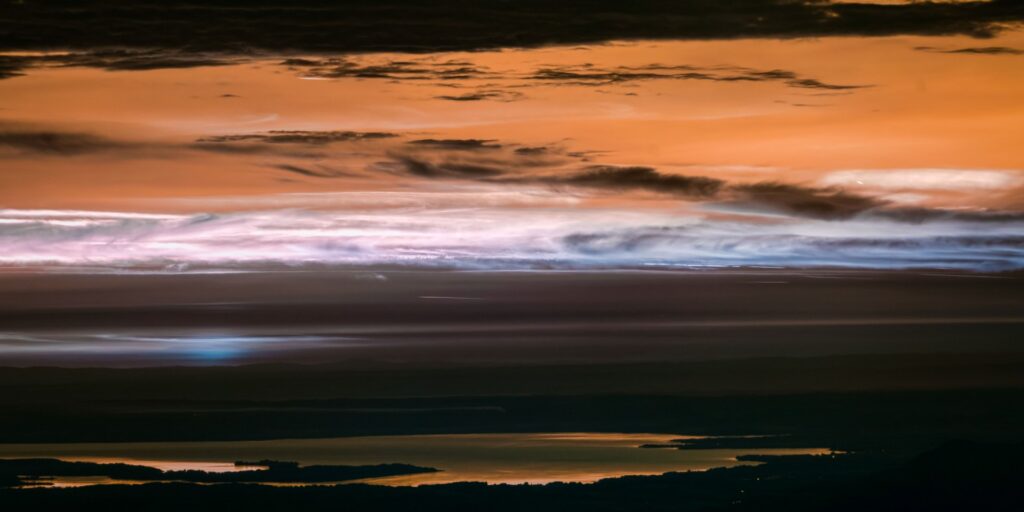
After a long and productive night, one of my highlights is watching the sunrise in the morning which announces the end of my shift. Since there is nobody here besides the observer, I put on classical music from Bruckner and sit outside for half an hour while liquid nitrogen is refilled in the telescope. Nearby Ammersee is sometimes illuminated by the rising sun and this was the case here.
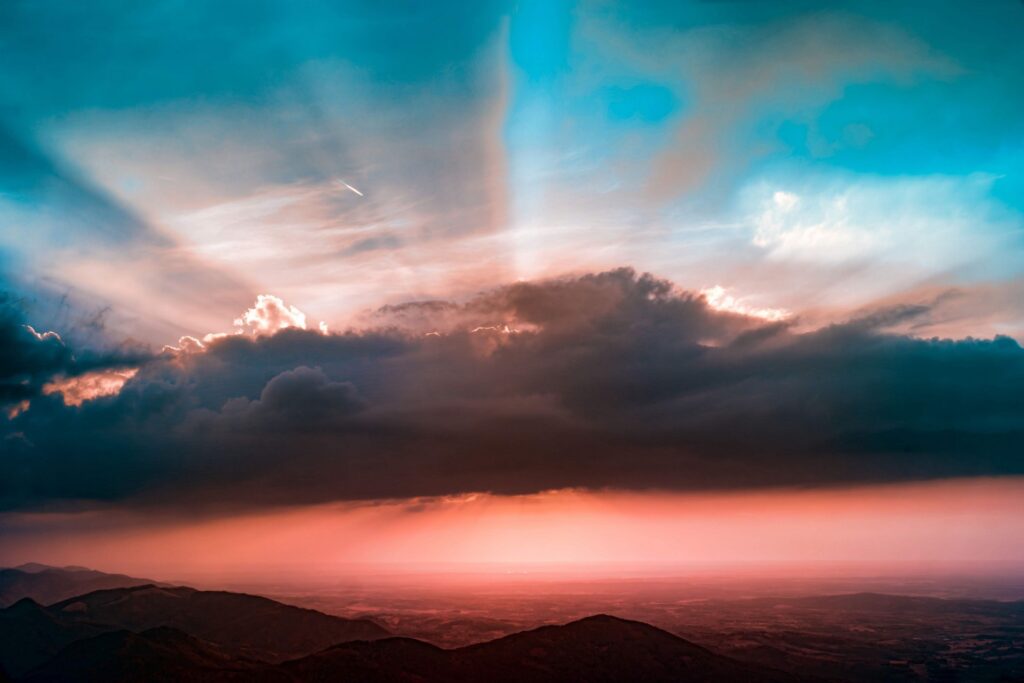
One of the sad things in astronomy is that we often can’t enjoy the sunset. Certain calibration operations, the taking of sky flats and opening up the telescope, have to be undertaken during that time. Here, I simply put my camera into time lapse mode and collected photos while I was working. Normally, sunsets are more beautiful in the visible than the infrared but here I prefer the infrared look.
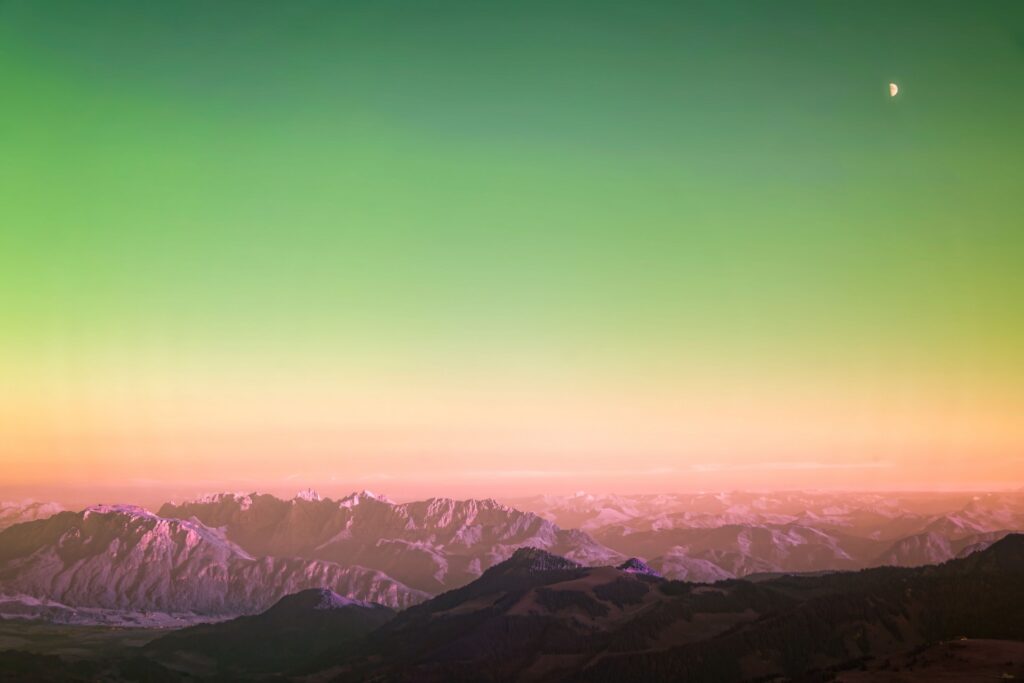
Ever imagined how the sky on an extrasolar planet could look like? On Earth, the sky is blue mostly due to Ozone with rayleigh scattering, which is still often taught at school as an explanation, playing only second fiddle. Other gasses therefore would color the sky differently, which is also what happens when you photograph with this filter.
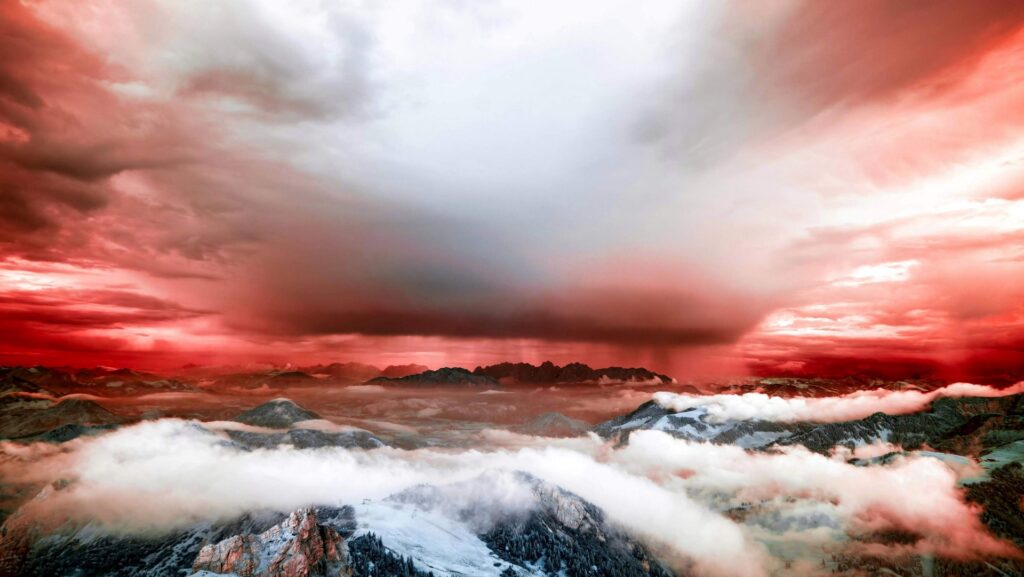
With autumn approaching, the stormy season has begun. Infrared is able to show the structure of the incoming rainclouds with almost no haze, making them look all the more threatening.
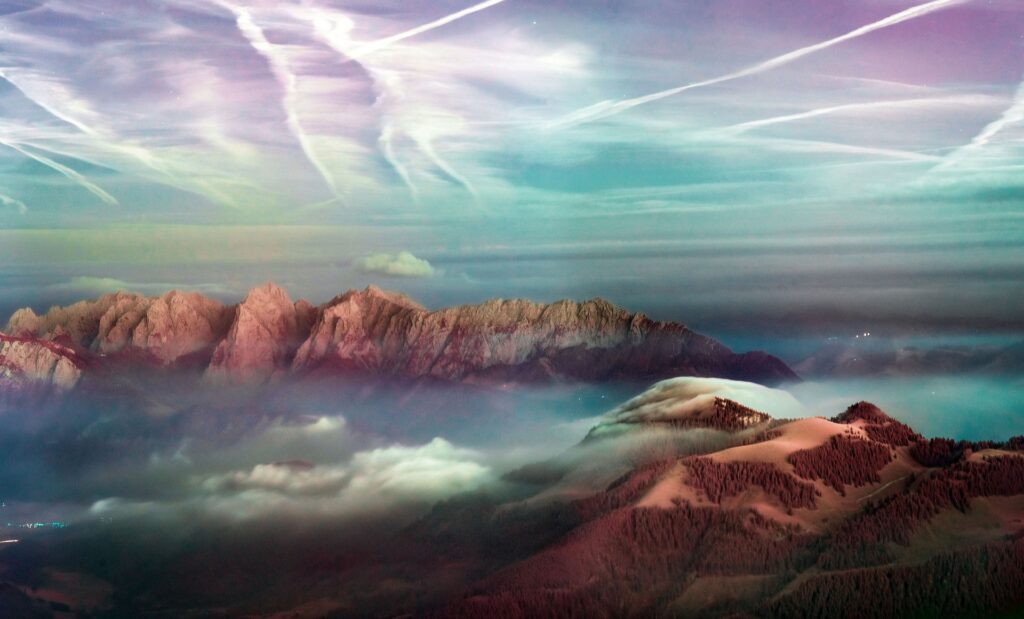
Night shots are particularly challenging in the infrared since the amount of photons is quite low. However, trying it with a not very bright superzoom lens may be called insanity! During full moon, I took a series of ten images and stacked them. This lowered the image noise well enough to clean the image and show an otherworldly scene.
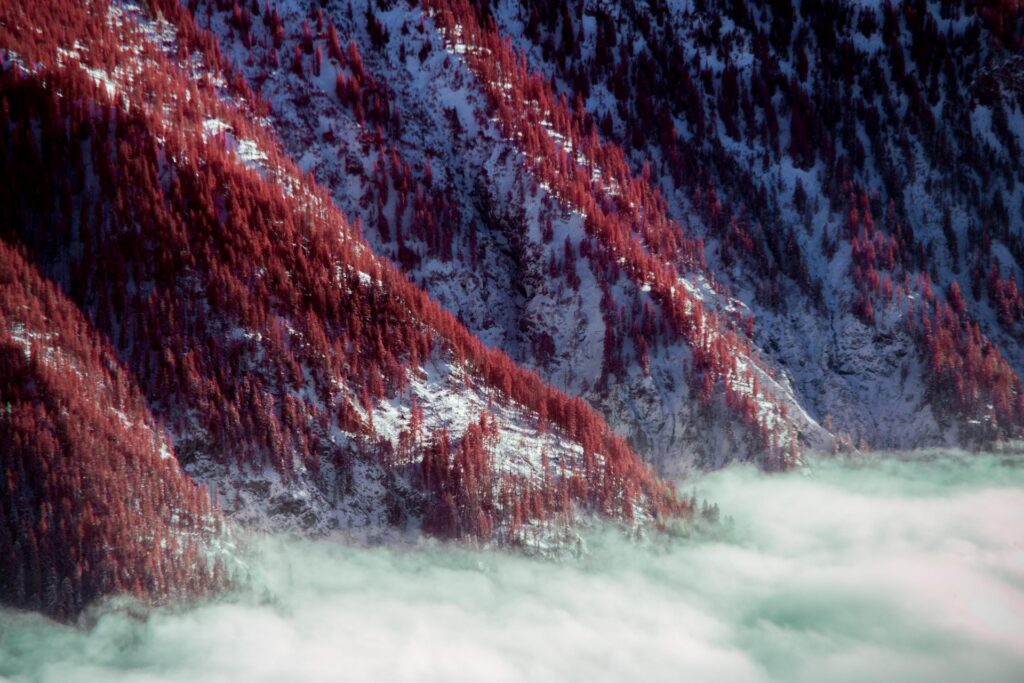
Winter has caught up with the alps. After waking up and seeing this beautiful scenery, I immediately grabbed my camera and took a photo of the increasing inversion. Infrared serves as an increased contrast between the snow and the trees.
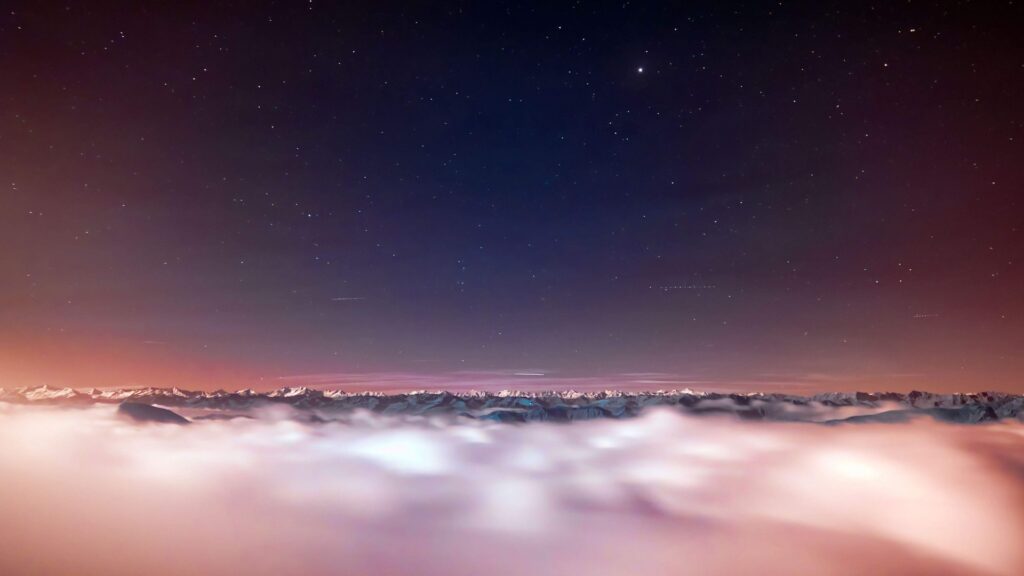
Full moon is a good time to attempt night-time infrared photography. This night, I was still covered in clouds with only very short moments of clear sight. While I couldn’t observe due to the high humidity, taking photos on Mt. Wendelstein that night was rewarding enough.
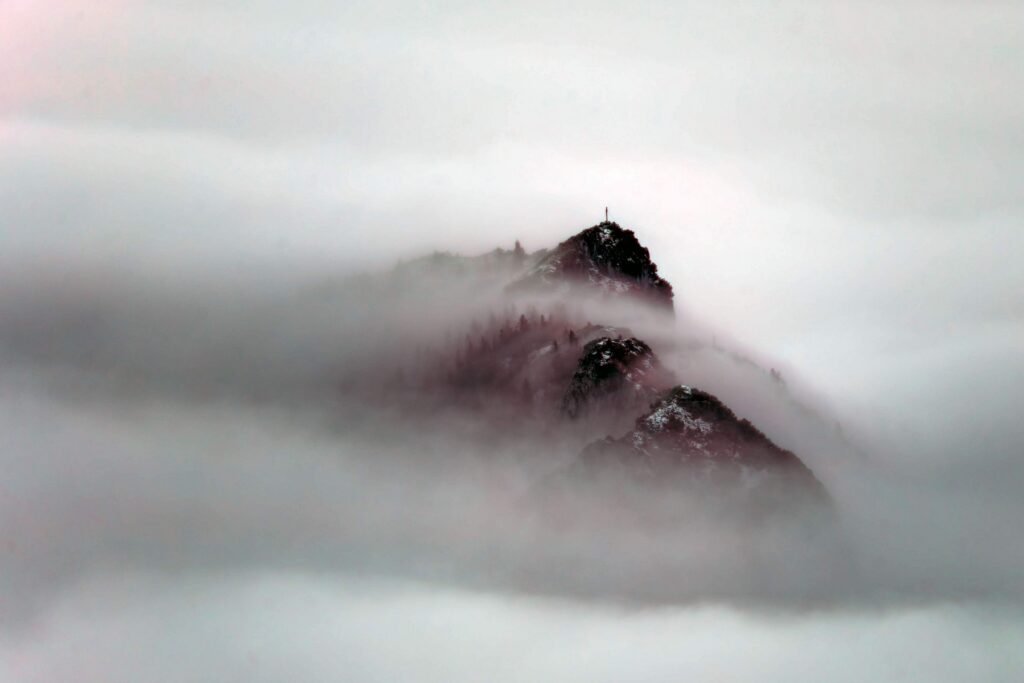
With this photo, the year on Wendelstein has come to an end with spring about to start. One last time, we were in a sea of clouds and even the neighboring mountain top was almost completely covered.
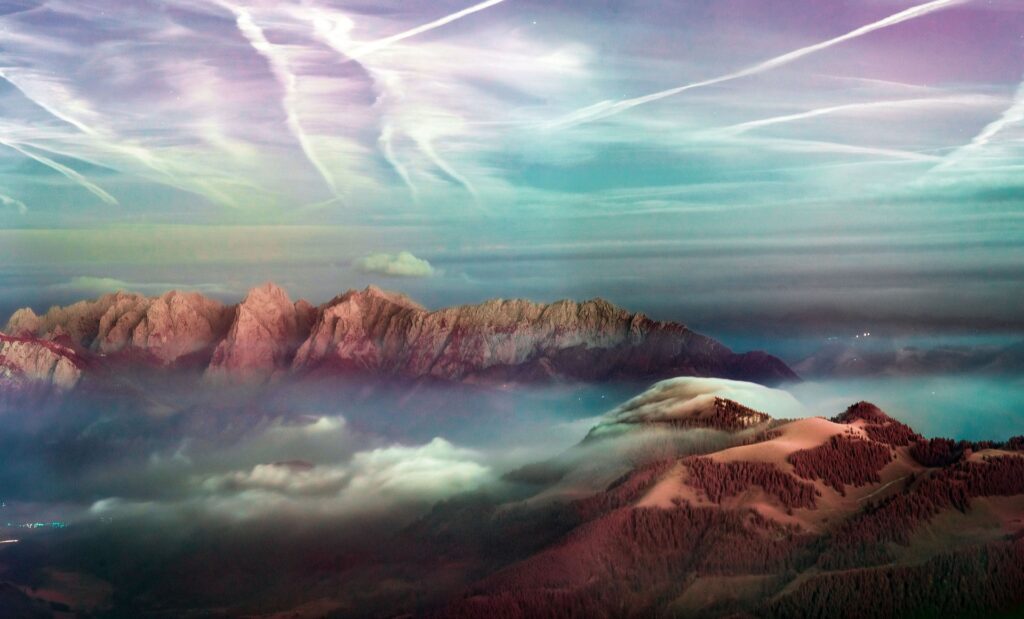
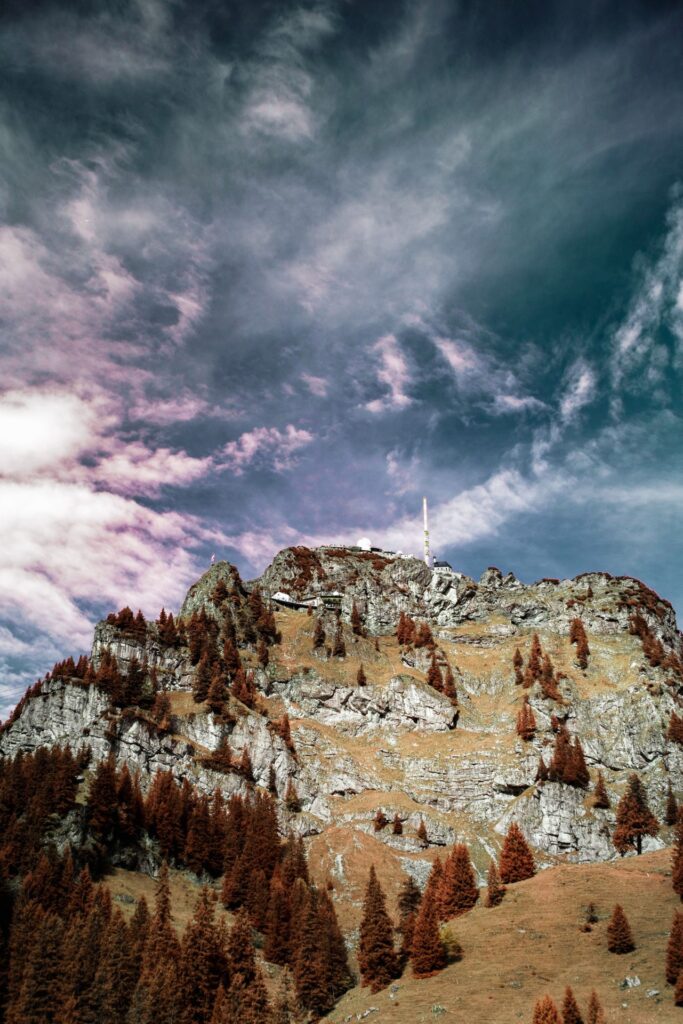
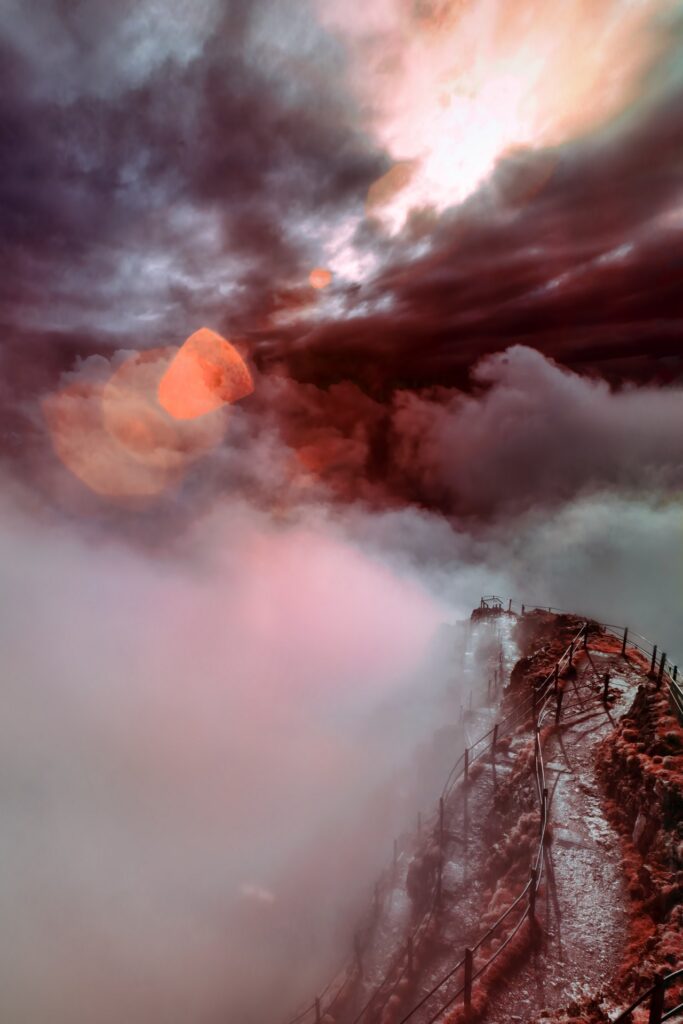





One Response
What process did you use for the night shot of a few stacked images? Towards the end. I love it